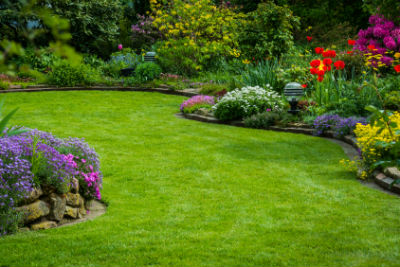
Spring is the season of fresh starts after the cold of winter breaks. Animals appear from their hiding places with their newborn babies in search of food. Seeds are buried and watered naturally, sprouting new life all around.
Rain falls to replace the snow and enrich the landscape once again. In the midst of all this, some landscape maintenance may be necessary to help it thrive in the changing atmosphere. Here are six simple Spring-cleaning tasks to get your landscape ready for the spring season.
Assess and Repair Winter Damages
Cold weather can damage your yard in many ways. Dead foliage may be scattered amongst the new growth. Trees and shrubs that were covered in ice and snow may suffer from breakage and dead limbs. Decorations and framing throughout the space may be uprooted or damaged from the harsh weather of the Winter months. Repairing problem areas is the first step in preparing your landscape for Spring.
- Replace or patch broken yard fixtures.
- Mow your grass to remove dead and damaged layers.
- Trim trees and bushes of their dead or broken limbs and prune as desired. Consider hiring a tree service company for any major work.
- Check trees, shrubs, and grasses for diseases, infections, or infestations that may have resulted from the cold weather.
- Determine if new fertilizers are needed to target particular problems.
Remove Debris From Your Lawn
With the initial problems assessed and tackled, you may find your yard covered in Winter debris. Removing this is vital to the health of your lawn and plants.
- Rake winter thatch and newly mowed grass away from your lawn to prevent your grass from suffocating.
- Weed your lawn, flower beds, and gardens.
- Check different yard fixtures for debris.
- Dispose of the tree and bush clippings.
- Remove foliage from the base of shrubs and trees. The foliage barrier may impact water and nutrient absorption if not disposed of.
Prepare for Weeds and Pests
With temperatures rising the small reprieve from yard pests will come to an end, and weeds will begin poking up through the ground again. Spring is the perfect time to get ahead of these yard menaces with some precautionary observation.
- Check for any early weeds and clear them out thoroughly so they don’t leech nutrients from nearby plants.
- Pay attention to signs of pest caused illnesses in your plant life.
- Gather fertilizers with pest deterrents that are safe for your plants.
- Consider purchasing plants that prevent pests also.
- Get mulch to prevent unwanted weeds around focal points, trees, and shrubs.
Enhance and Protect Your Soil
The ground may freeze and refreeze in the Winter, condensing the soil around plant roots and pulling nutrients away. As Spring comes, bringing new plants and reviving others, the soil may need a boost to keep your yard looking healthy after the cold season.
- Aerate your yard by poking small, deep holes into the soil. This will make room for roots, water, and nutrients to move through as the dirt loosens.
- Add fertilizers around winter-worn plants to boost their nutrient intake and fight any existing diseases or infestations.
- Spread nutrient-rich and pest-fighting fertilizers on your lawn, flower beds, and gardens for new and annual plants.
- Mulch to prevent weed growth, promote nutrient and water absorption, and control the ground temperature.
Evaluate Irrigation Systems
Spring is known as the rainy season, but rainfall will fluctuate and proper irrigation will be essential to maintaining the health of your lawn. Checking the effects winter may have had on irrigation systems can stop problems before they occur.
- Winter weather may wear away at areas of your lawn creating pockets for water. These should be altered to prevent your lawn from drowning.
- Dig pathways for water flow to direct rain away from overwatering your plants and prevent erosion.
- Check watering units such as sprinklers to make sure they are working properly and clear of debris.
- Set sprinklers and other irrigation methods with rainy weather in mind to keep your lawn moist but not soaked.
Plant New Spring Life
Many plants grow best in the Spring or Summer. With specific growth patterns being a key factor in the health and beauty of these plants, knowing when to plant them and creating an ideal environment is important.
- Find plants for your landscape. Make sure they will get enough water, sunlight, and nutrients to grow happily.
- Plant them at their ideal times in the season to get the most out of their life-cycle
- Find plants that prevent pests to put alongside gardens and flowerbeds to keep your new plants safe and healthy.
The beginning of Spring is the perfect time to prepare your landscape for the lush seasons ahead. Set up your yard with new colors, life, and beauty alongside your spring cleaning efforts for a lovely Spring lawn. If the workload seems to bothersome, hire a professional landscaper to get it done right the first time.










